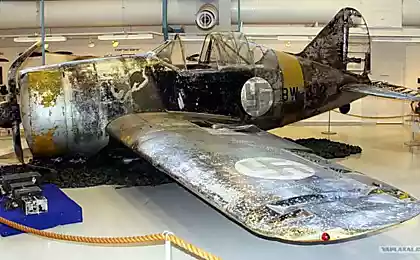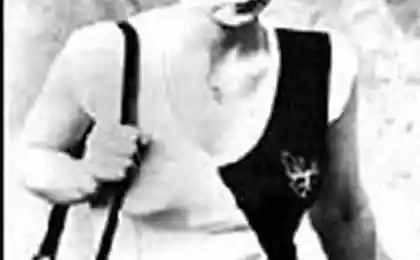692
Divers again examined the wreck of the "Mary rose"
A group of researchers made the first in the last nine years dive to the wreck of the English flagship the first half of the XVI century.
More than three decades have passed since the moment when the ship "Mary rose", flagship of the fleet of the English king Henry VIII Tudor (1497-1547), was raised to the surface. But left something in the place of his crash, and how it is able? To answer this question, a group of researchers for the first time in nine years descended to the crash site.
As reported by Professor mark Jones, buried on the seabed is also a significant amount of logs and other objects.
In General, the researchers described the dive as "very successful". The divers placed the recorder on the seabed and a high-tech buoy on the surface of the water. These devices will transmit information to scientists on the status of seawater and sediments near the shipwrecks.

"All the [wrecks] are now buried deep, and this [circumstance] in the future will preserve what remains on the seabed," said Christopher Dobbs, a Maritime archaeologist from the Fund of the "Mary rose".
"Mary rose", the three-deck Carrack, was launched in Portsmouth in 1510. It was one of the largest and most powerful ships of Henry VIII. The ship took part in the Italian wars (1494-1559), in 1512 "Mary rose" together with other ships attacked Brest (a major port in the West of France). In 1528 and 1536 years the ship was modified: the number of guns has increased to 91, and the displacement of up to 700 tons.
In 1545 Francis I, king of France, landed on the Isle of Wight (the largest island of England). The British sent to protect the island's fleet of 80 ships, headed by "Mary rose". An overloaded ship because of a strong gust of wind tilted on the right Board. Through the gun ports of the ship was filled with water and sank. The Carrack was about 400 people, most of them died, including Admiral George Carew. Saved only 35 people.
Over the next 20 years, the ship tried several times to raise, but failed due to the imperfections of technology. Until the end of the XVI century the ship was clearly visible from the surface of the water, but then it was covered with silt. In the mid-nineteenth with the "Mary rose" was raised to the surface part of the ship guns, carriages, bows, pottery, scraps of fabric and a few skulls. As a result of these works the ship's hull was damaged.
In the late 60-ies of XX century, the divers again showed interest in the "Mary rose". By 1982, with the bottom of the sea raised a large part of the remains of the ship. They are now on display at the Museum of Portsmouth.
Source: nkj.ru
More than three decades have passed since the moment when the ship "Mary rose", flagship of the fleet of the English king Henry VIII Tudor (1497-1547), was raised to the surface. But left something in the place of his crash, and how it is able? To answer this question, a group of researchers for the first time in nine years descended to the crash site.
As reported by Professor mark Jones, buried on the seabed is also a significant amount of logs and other objects.
In General, the researchers described the dive as "very successful". The divers placed the recorder on the seabed and a high-tech buoy on the surface of the water. These devices will transmit information to scientists on the status of seawater and sediments near the shipwrecks.

"All the [wrecks] are now buried deep, and this [circumstance] in the future will preserve what remains on the seabed," said Christopher Dobbs, a Maritime archaeologist from the Fund of the "Mary rose".
"Mary rose", the three-deck Carrack, was launched in Portsmouth in 1510. It was one of the largest and most powerful ships of Henry VIII. The ship took part in the Italian wars (1494-1559), in 1512 "Mary rose" together with other ships attacked Brest (a major port in the West of France). In 1528 and 1536 years the ship was modified: the number of guns has increased to 91, and the displacement of up to 700 tons.
In 1545 Francis I, king of France, landed on the Isle of Wight (the largest island of England). The British sent to protect the island's fleet of 80 ships, headed by "Mary rose". An overloaded ship because of a strong gust of wind tilted on the right Board. Through the gun ports of the ship was filled with water and sank. The Carrack was about 400 people, most of them died, including Admiral George Carew. Saved only 35 people.
Over the next 20 years, the ship tried several times to raise, but failed due to the imperfections of technology. Until the end of the XVI century the ship was clearly visible from the surface of the water, but then it was covered with silt. In the mid-nineteenth with the "Mary rose" was raised to the surface part of the ship guns, carriages, bows, pottery, scraps of fabric and a few skulls. As a result of these works the ship's hull was damaged.
In the late 60-ies of XX century, the divers again showed interest in the "Mary rose". By 1982, with the bottom of the sea raised a large part of the remains of the ship. They are now on display at the Museum of Portsmouth.
Source: nkj.ru























